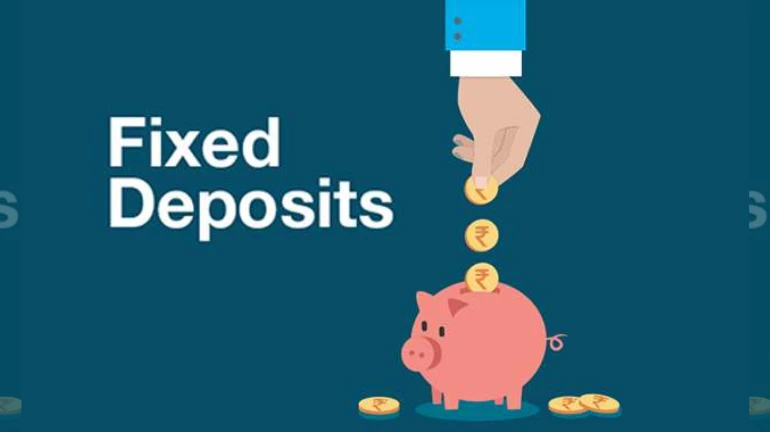
Do you want to increase your investment returns? You can now use the compound interest and fixed deposit calculators and learn about them in detail. So, without any further wait, let us get into this blog post and understand what compound interest is, explore the notion of fixed deposit, get familiar with their working mechanism, and see how to gain maximum profit by applying the formulas. Let's get started.
Compound interest is essentially the addition of interest to an amount borrowed or saved. Unlike simple interest where only the principal earns interest, it allows accumulation of interest on both the principal amount as well as any accrued interests.
For instance, if you invest INR 1000 in a savings account that pays an annual rate of 5%, at the end of the first year, you will be given INR 50 for your efforts. A similar pattern shall arise during the subsequent year, where your principal amount will become INR 1050, which would earn some more money from such a total value over time. This is just one example of a perpetual cycle whose sums continue increasing at each step. This explains why compounding rates are credited with this phenomenon.
1. Understanding the Variables
Before beginning the discussion around what is and how to calculate a compound in Principal Amount, Interest Rate, Period, and compound frequency, know about its details.
● Principal Amount: It is referred to as the initial amount which you invest or borrow.
● Interest Rate: The interest rate at which the money is earned.
● Time Period: It is the time duration in which the money is invested or borrowed.
● Compounding Frequency: This is the duration of how often the interest is given and borrowed.
2. Using the Formula
The formula to calculate CI is A = P (1 + r/n) ^ (NT), where:
● A is the final amount you will have after compounding, including the principal and accrued rate of interest.
● P is the principal amount.
● r is the annual interest rate in decimal form (e.g. 5% = 0.05).
● n is the number of times interest is compounded per year.
● t is the total period in years or fractions of a year.
3. Inputting the Variables
In the common compound interest calculator, there will be given fields and you need to put variables. You simply put variables and get your calculated results.
4. Understanding the Results
After the calculations, there will be two results by the calculator: one is the amount you will get interest earned, and the other one is after compounding it. With these results, an investor can make a secure and more profitable decision.
Offered by various banks and financial institutions, fixed deposit is the most considered investment by investors, as it allows a lump sum investment at a time for a duration. Once the duration is over, you get a huge return at a fixed rate of interest. FDs are popular among investors as they offer higher returns with low investment and risk.
Now, let's discuss how FDs work and how using an FD calculator can be helpful.
1. Understanding Fixed Deposits
Considered one of the safest and best options for investors, as it has low risk and better returns. Furthermore, in this deposit, you put a lump sum of money for a fixed time and get a huge return later, when the time gets over with a fixed rate of interest.
2. Variables Involved
Similar to compound interest, the variables involved in calculating FD include Principal Amount, Interest Rate, and period.
3. Using the Formula
FD is A = P * (1 + r/n)^(nt), which is the formula to calculate the same.
● A is the maturity amount you will earn at the end of your FD tenure.
● P is the principal amount you deposit.
● r is the annual interest rate in decimal.
● n is the number of times the rate of interest is compounded per year. For FDs, it is usually annually or quarterly.
● t is the total period of your FD in years or fractions of a year.
4. Inputting the Variables
Like a compound interest calculator, the FD calculator requires you to input the values of the variables mentioned above. Once done, click on calculate to get your maturity amount.
5. Understanding the Results
It is to be noted that the calculator gives you two different results, one matured amount and one interest. With this result, you have a chance to compare different FD options and select the best one.
● Saves time and effort: Calculations manually can be a hard and time-consuming task, hence needing effort. Therefore, using an FD calculator for compound interest calculation is the best option, saving time,
● Helps in planning investments: Input of various variables helps to understand the investment better and lets you know which goes best with the plan.
● Accurate results: Using calculators is a safe option, as it reduces the element of risk and ensures accurate results.
● Easy to use: Compound interest and FD calculators are easy to use without any special knowledge and skills, for usage.
● Comparison of options: Try comparing different interest options in the calculator before deciding on the investment.
● Understand compound interest better: Planning with various other variables helps you to have a better understanding of your finances and achieve the desired goals.
Compound interest and FD calculators are considered powerful tools that influence market-making decision capabilities. Having accurate results can help you with uniform decision-making skills, making it easier to plan your finances better for the future. Irrespective of your plans, whether it is a short-term plan or long-term retirement, with the help of these calculators, one can make full use of their goals and achieve them in finances. Therefore, for the next time planning, be sure to use FD or compound interest for better results.





